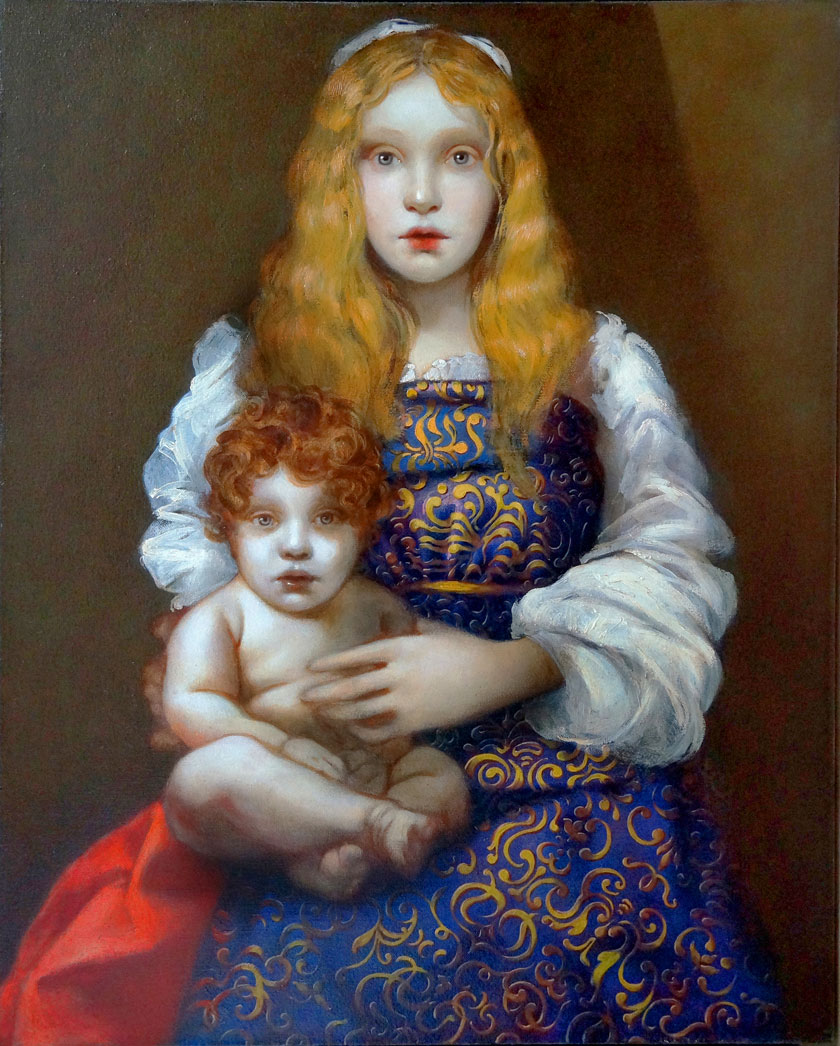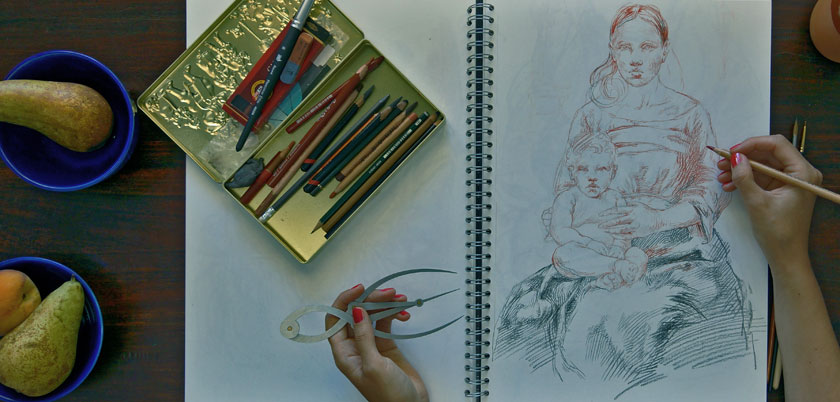Art Lesson 42, Part 1
How to do Preparatory Sketches and Underdrawing with a Brush
Learn how to paint like the Old Masters!
Old Masters Academy Online Course
Self-study, self-paced online video courseLifetime membershipOne-time payment: $487Enroll Now!Personal Tutoring online + Online Course
Unlimited tutoring by the Academy teachersLifetime membershipOne-time payment: $997Enroll Now!« Back to the Art Lessons List
Preparatory Sketches and Underdrawing with a Brush
Materials:
- Pre-stretched ready-primed canvas
- Nails and thread
- Hog brushes
- Sable or Mongoose or Badger Brushes
- Soft Synthetic Brushes
- Turpentine
- Stand Linseed Oil
Paints:
- Titanium White
- Zinc White
- Yellow Lake
- Scarlet Lake
- Scheveningen Red Deep or other bright Red, (preferably transparent)
- Burnt Umber
- Burnt Sienna
- Venetian Red
- Yellow Ochre
- Transparent Gold Ochre
- Ultramarine Blue
- Charcoal Grey
- Mars Black
This is what the completed painting looks like. Here, in this speed-painting demonstration, we can see the whole process required for the painting.

So, let’s see the process step by step. First, we realize our visual ideas in preparatory sketches. Then we prepare a piece of tracing paper. The paper size should have the same proportions as the canvas. You can use the “Proportion Calculator” to define its size. As you can see, the drawing has the same proportions as the canvas.

Place and fix the tracing paper over the sketch.
Now we draw guidelines, which will be used to transfer our drawing onto the canvas. You can draw diagonal or squared guidelines; it’s up to you.
The canvas needs to have the same pattern of guidelines.
You can use small nails. Drive them into a wooden stretcher in key points. Then pull the thread according to the pattern of the guidelines on your sketch.
Session One
We start with a Brush Sketch over a well-dried Imprimatura.
Let me remind you how to make an Imprimatura. We mix Burnt Umber thinned with Turpentine and apply it unevenly.
Back to painting. For a Brush Sketch, we mix Venetian Red and Mars Black. We do not need to add a medium. Hog brushes will be perfectly suitable for this task.
First, we will outline the figures sketchelly. Choose small or larger sized brushes, depending on the size of the area you block in. With a stiff, small-sized brush, you can brush away unwanted paint.
Gradually specify key features, but do not overdo it with details. Soft Synthetic Brushes are well-suited for details. After you sketchily outline the figures, you can remove the guideline thread. You can reuse the thread for future compositions. Remove the nails; they can also be reused.
Without the guidelines, you can clearly see what needs to be improved. In case you need to repaint some areas, just clean off the paint until you get to the Imprimatura and start sketching again.
Keep in mind that the Imprimatura should be well-dried, otherwise you can wipe it off until you get a white canvas.




